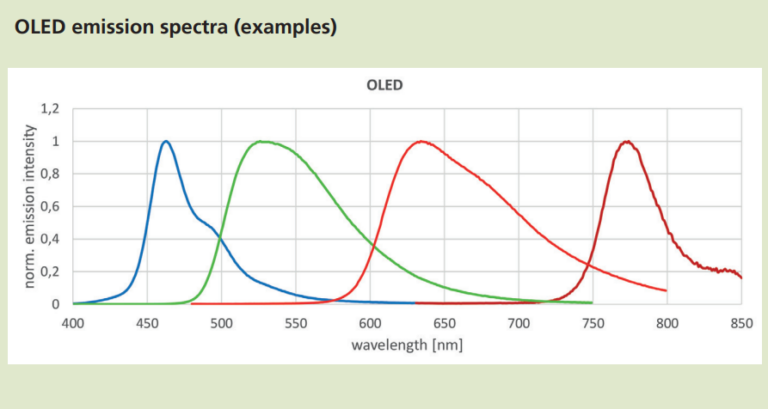The combination of light sources and light detectors on a compact module enables reflection or photoluminescence measurements to be carried out for analytical applications. With the help of organic electronics, organic photodiodes (OPD) and light-emitting diodes (OLED) can be produced cost-effectively on simple glass substrates. Both component types (OPD and OLED) can be integrated in applicationspecific geometries on the same glass substrate. The size of the light emitting and light-absorbing areas can be optimally harmonized.
Technology
Fraunhofer IPMS develops organic photodiodes that can be modified for specific applications. Both the spectral sensitivity and the component areas can be customised according to customer requirements. Examples of various designs are shown in the title illustration.
The optically active areas of the organic components can be structured as required, from small pixels to larger areas. The possibility of integrating the photo diodes on polymer films also makes flexible components possible.
The organic components offer great potential as the sensitivity is covered over a wide
wavelength range from currently 300 nm (ultraviolet, UV) over the entire visible range up to 850 nm (near infrared, NIR).
The use of industry-relevant substrate sizes of 200 mm silicon wafers, glass substrates or films on carrier wafers opens up the transition of this new technology from research to a wide range of industrial applications.
Applications
An example of an analytical application currently being investigated in MOLOKO project, which is funded by the EU, is the analysis of quality characteristics and contaminants in milk.
For this purpose, the chip is combined with a nanostructured plasmonic grid provided with specific antibodies. The milk to be tested is passed over the chip via a microfluidic system. The OLED-OPD platform measures the change in reflectivity of the plasmonic grid.
The measuring principle can also be applied to medical applications or environmental analysis. In addition, an OLED-OPD platform offers the possibility to evaluate fluorescence signals by using dye markers.





